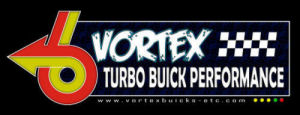

Fix the Basics!
Before you spend any money on performance parts, go thru the car and find out what you bought. Some of these cars have been well maintained by knowledgeable owners and other cars have passed thru a series of guys that may not have any idea about them and were rigged at best. It's up to you to know the difference. Most shop mechanics are clueless about these cars and putting one into a non Buick experienced shop is asking for more problems than you already have. If the foundation is not solid, you will not enjoy the car as you should.
If you are buying a car from someone who knows the cars, then he should be able to tell you what has been done to the car but it's up to you to verify it. Trust, but verify!
I am going to list a number of things that you should check, fix, replace, whatever as the case may be. Go over to gnttype.org and go thru its Spring Cleaning section as well as what I provide.
1. If the vacuum lines look old, have cracks, or turn your fingers black when you touch them, replace them. Don't forget the line that goes to the vacuum storage ball that is under the car below the charcoal canister. Check the small hard plastic lines that run across the firewall to the heater control valve and AC controls. I would replace all the check valves as well.
2.If the car still has a factory style MAF sensor, replace it with a Translator and 3.5" LS1 style MAF.
3. Put a new 340 style fuel pump in the tank (check to see that inside of the fuel tank is clean and not full of rust), install a new fuel filter, and a fuel pump hot wire kit.
4. Make sure the engine has had the factory style (plastic coated timing gear teeth) replaced with one that has metal teeth as the plastic will soon flake off the original, if has not already started, and things will soon get very expensive.
5. Replace the spark plugs and spark plug wires,
6. The factory valve springs were getting soft at 40,000 miles which reduced the rpm limits of the engine and it only gets worse as boost is increased. Put new (not factory) valve springs on it.
7. If it does not have a set of newer injectors on it, I would install a set of 60# injectors and a new chip matched to the new injectors.
8. Cut the oil filter open and check for metal chips in it, and change the oil when you install the new filter.
9. Check for exhaust leaks whether at the ports, or a crack in the pipes.
10. Check for vacuum/air leaks at all the hoses, under the throttle body block, around the EGR base, etc.
11. Install the breather bypass in the end of the valve cover passenger side.
12. Check the compression on all cylinders on a warm engine. Make sure they are all close and reasonable.
13. Change the transmission fluid and filter. Look for major trash in the pan. Does it shift firmly? Is the TV cable adjusted properly? Also drain the differential and put new fluid in it? Does it have a limited slip rear in it? Does it still spin both tires as it should?
14. PowerLogger
15. Adjustable fuel pressure regulator
16. Fuel pressure transducer to be able to log fuel pressure in PowerLogger
17. Three bar map sensor to be able to log boost in PowerLogger.
18. Analog vacuum/boost gauge 20 " Hg to 30 psi of boost.
19. Analog oil pressure and water temperature gauges
20. A Scan Master. Yes, I have already put a PowerLogger in the equation, but, when driving on the street, it is not always practical to hook up your laptop and the Scan Master is blinking right in front of your eyes for that day when something stops working.
21. A wide band O2 to drive that chip that controls fueling based upon A/F ratios.
The above is not glamorous, it can be tedious, and it is expensive, but, if the platform is not in good condition, those ornaments that you bought and hung on it are not going to do much and ownership will not be any fun. Hopefully much of the above has been done by prior owners, but, if not, these items are mandatory. The wideband O2 is on the borderline between getting the basics right and starting you on the Performance Enhancement path.
I added Powerlogger because it is really difficult to troubleshoot a car and verify it's correct condition if you cannot record a data log. It not only makes it easier for you to examine but it makes it easy to obtain advice from others more experienced.